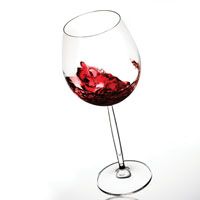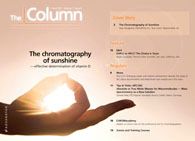Red wine and rodents
Little is known about the role of selective attention in odour discrimination, which is why a group from Japan has assessed whether mice can discriminate between different liquors, just like a wine expert.

We are bombarded with sensory information and selective attention is the key to our brains sifting through it and focusing on what matters. Little is known about the role of selective attention in odour discrimination, which is why a group from Japan has assessed whether mice can discriminate between different liquors, just like a wine expert.1
To test them, the mice were placed in a Y-shaped maze and trained to recognize red wine from distilled water. The mice were then asked to distinguish between the red wine and other liquors, including sake, plum liqueur, white wines, rosé wine and two other red wines. The trained mice were right more than 70% of the time; however, while they could tell the difference between the first and second wines, they had a harder time with the first and third.
To uncover why these wines posed more of a challenge the group analysed the wines’ volatile compounds using gas chromatography. GC revealed that the peak patterns of the first and second wines were considerably different, while the pattern of the first and third were much more alike.
The study suggests that the mice selected different subsets of volatile compounds to focus on, and that it was highly likely that their ability to distinguish depended on the how different these profiles were.
1. N. Takiguchi et al., Chem. Senses, 33, 283–290, (2008).
This story originally appeared in The Column. Click here to view that issue.
New Study Reviews Chromatography Methods for Flavonoid Analysis
April 21st 2025Flavonoids are widely used metabolites that carry out various functions in different industries, such as food and cosmetics. Detecting, separating, and quantifying them in fruit species can be a complicated process.
Analytical Challenges in Measuring Migration from Food Contact Materials
November 2nd 2015Food contact materials contain low molecular weight additives and processing aids which can migrate into foods leading to trace levels of contamination. Food safety is ensured through regulations, comprising compositional controls and migration limits, which present a significant analytical challenge to the food industry to ensure compliance and demonstrate due diligence. Of the various analytical approaches, LC-MS/MS has proved to be an essential tool in monitoring migration of target compounds into foods, and more sophisticated approaches such as LC-high resolution MS (Orbitrap) are being increasingly used for untargeted analysis to monitor non-intentionally added substances. This podcast will provide an overview to this area, illustrated with various applications showing current approaches being employed.

.png&w=3840&q=75)

.png&w=3840&q=75)



.png&w=3840&q=75)



.png&w=3840&q=75)







